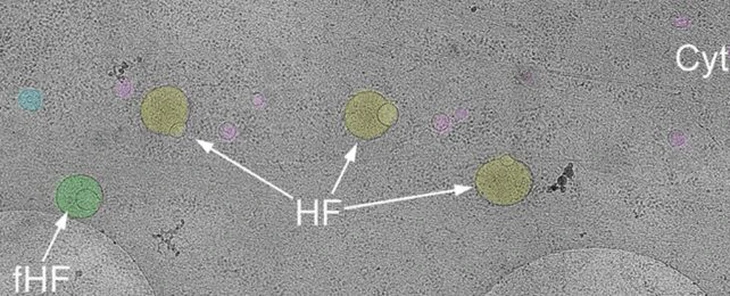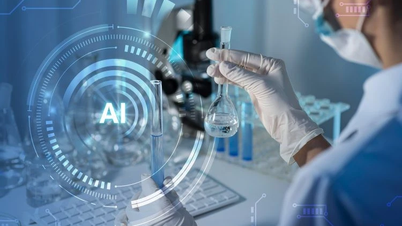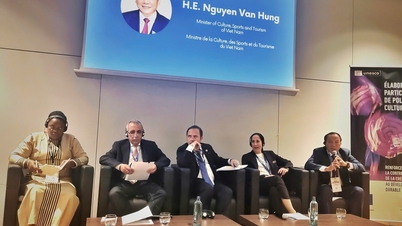
The discovery of hemifusome structure could open up new research directions for many complex diseases - Photo: AI
In a paper published in Nature Communications, scientists describe a completely new organelle called the hemifusome, a membrane-bound organelle that is common in many tissues, from humans to mice and monkeys. This structure acts as an intracellular sorting center, helping cells sort, package, transport and process materials inside.
Dr. Seham Ebrahim, a cell physiologist at the University of Virginia (USA), a member of the scientific team, shared: "The discovery of hemifusome is like discovering a new sorting center inside the cell. When this process is disrupted, it can be related to diseases that affect the body widely."
To observe this special structure, the research team used cryo-electron tomography (cryoET), a modern method that combines ultra-fast freezing and electron microscopy. The tissue sample is suddenly cooled to avoid deformation, then exposed to electrons to create a series of 2D images, which are then reconstructed into a detailed 3D model at the near-molecular level.
The results showed that small vesicles in cells are often paired with each other through a common membrane, called the hemifusion diaphragm. At this junction, the hemifusome is present as an intermediate structure where the exchange of materials takes place. In other words, the hemifusome is an intracellular transit station.
“You can think of vesicles as delivery trucks in the cell, and hemifusomes as the docks where cargo like proteins, enzymes or waste are transferred,” Dr. Ebrahim said.
Unlike other fixed organelles, hemifusomes are flexible in shape and widely distributed. Experiments with gold nanoparticles and cultured human cells showed that hemifusomes have the ability to absorb materials from the environment in a completely unique way, not known for any other cellular structure.
Researchers believe hemifusomes may play an important role in protein transport or waste disposal, vital mechanisms for maintaining homeostasis within the cell. When these processes are disrupted, cells can accumulate toxins or transmit incorrect signals, common causes of many genetic, degenerative, or cancerous diseases.
In the future, scientists will continue to study how this structure works in healthy cells and how it changes in disease.
New insights could hold the key to developing treatments for complex diseases involving genetics, metabolism or cancer.
Source: https://tuoitre.vn/phat-hien-cau-truc-hoan-toan-moi-ben-trong-te-bao-nguoi-20250716195627855.htm







































![[Photo] Panorama of the cable-stayed bridge, the final bottleneck of the Ben Luc-Long Thanh expressway](https://vphoto.vietnam.vn/thumb/1200x675/vietnam/resource/IMAGE/2025/9/30/391fdf21025541d6b2f092e49a17243f)
![[Photo] President Luong Cuong receives President of the Cuban National Assembly Esteban Lazo Hernandez](https://vphoto.vietnam.vn/thumb/1200x675/vietnam/resource/IMAGE/2025/9/30/4d38932911c24f6ea1936252bd5427fa)
![[Photo] Solemn opening of the 12th Military Party Congress for the 2025-2030 term](https://vphoto.vietnam.vn/thumb/1200x675/vietnam/resource/IMAGE/2025/9/30/2cd383b3130d41a1a4b5ace0d5eb989d)
![[Photo] The 1st Congress of Phu Tho Provincial Party Committee, term 2025-2030](https://vphoto.vietnam.vn/thumb/1200x675/vietnam/resource/IMAGE/2025/9/30/1507da06216649bba8a1ce6251816820)


































































Comment (0)